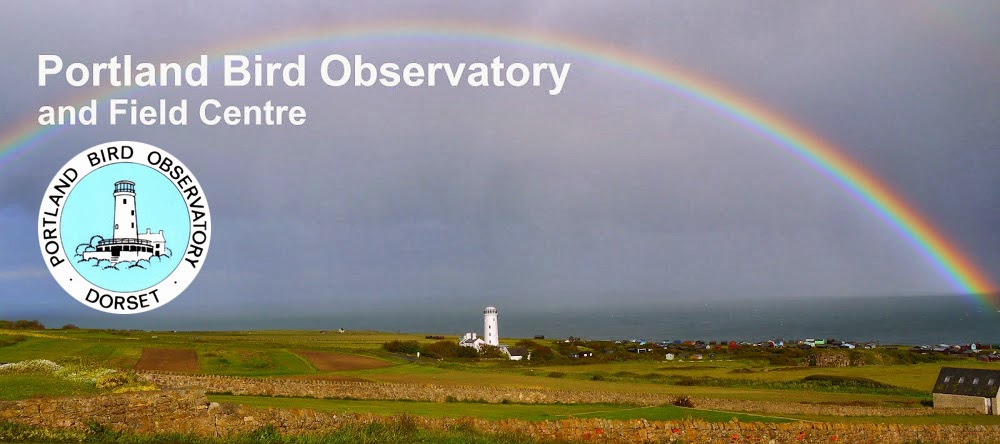Nine Delicates and a single White-speck were the best immigrants from the overnight moth catch at the Obs.
Nothing like the semi-regular it is in eastern England, Caspian Gull is still a really high value bird in Dorset with only ever one really get-able individual in the county; the previous three at Portland - like today's bird - have made only brief visits © Brett Spencer:
This Osprey was tracked flying down the West Cliffs from Blacknor to the Bill; it was joined by a second individual over the Bill and both left out to sea © Roger Hewitt:
The miscellaneous selection of other migrants/lingerers included a Hobby over Sheat Quarry © Brett Spencer:
...the long-staying Grey Heron - today frequenting a duck coop at Southwell! © Brett Spencer:
...this Grey Wagtail on a garden pond at Southwell © Nick Stantiford:
...and a Pied Flycatcher at Southwell © Debby Saunders:
And of entirely esoteric interest whilst on the subject of Pied Flycatchers, this adult has been hanging around at the Obs for a few days. In our experience, adults are extraordinarily rare in autumn (...presumably they're just really canny migrants that don't make the mistake of having to pitch down in such godforsakenly unsuitable habitat as we provide for them at the Obs) so this one was well worth a closer look.
The easiest way of spotting them, both in the hand and in the field, is by the shape of the pale rim to the tertials - noticeably stepped at the feather shaft in a youngster but rather regular/even in an adult; there are other more subtle differences in, for example, the pattern of the greater coverts but these aren't so easy to spot in the field.
What we hadn't appreciated was that it's quite usual for several inner secondaries to be left unmoulted in the otherwise complete post-breeding moult - these were easily seen on the spread wing of today's bird and weren't that difficult to spot on the closed wing (and thus ought to be visible in the field). From our reading of the literature we're guessing that this bird is a male: apart from the obviously blackish tail and upper tail coverts, there are a couple of blackish centred outer median coverts and there's a sharp boundary between black and white on the penultimate tail feather - the latter two features both quoted as back-up pro-male indicators.
Tail shape is a feature worth checking when ageing birds in the hand and the broad, rounded feathers of this bird were very much characteristic of an adult photos © Martin Cade:



















































